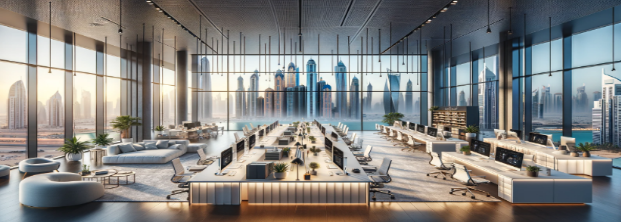Dubai, a vibrant nexus of culture and modernity, offers an exciting palette for interior design influenced by its rich history and contemporary art scene. Integrating art and culture into interior spaces not only adds aesthetic value but also helps to forge a deeper connection with the local and regional heritage. Here’s how Layan Halwani can infuse elements of Dubai’s unique cultural landscape into your home or business decor, creating interiors that tell a story.
Understanding the Cultural Landscape of Dubai
Exploring Historical Influences
Dubai’s history is a tapestry of Bedouin traditions, Islamic art, and a cosmopolitan populace. To truly reflect the spirit of Dubai in your interior design, start by familiarising yourself with these historical and cultural layers. Incorporating Islamic geometric patterns, traditional falaj water systems in garden designs, or even the majestic archways reminiscent of Islamic architecture can add a touch of historical continuity to modern spaces.
Embracing Local Elements
In addition to architectural features, consider the smaller, subtler elements of Dubai’s culture. Textiles such as Sadu weaving, with its bold colours and patterns, can be introduced in upholstery, curtains, or rugs. Pottery and other artisan crafts also reflect the Emirati heritage and can be used as decorative pieces or functional items within the home.
Incorporating Traditional Emirati Elements
Using Patterns and Textiles
Traditional Emirati designs offer a rich source of inspiration for textiles and decor. Incorporate fabrics that feature geometric or floral patterns into your design scheme to add warmth and texture. For a more direct homage, traditional Majlis style seating can be modernised to suit contemporary tastes while still providing a nod to Emirati gathering traditions.
Integrating Artisan Crafts
Handcrafted items not only support local artisans but also bring authenticity and personal storytelling into your space. Consider items like hand-woven baskets, handmade pottery, and traditional lanterns. These elements can serve as focal points or subtle accents, depending on the room’s overall design.
Showcasing Contemporary Middle Eastern Art
Selecting Modern Art Pieces
Dubai’s modern art scene is as vibrant as its heritage is profound. When choosing artwork, look for pieces that speak to the contemporary Middle Eastern aesthetic—dynamic, bold, and often with a commentary on cultural identity. Art galleries in Alserkal Avenue or the Dubai Design District can be great places to start your search.
Integrating Art with Interiors
Contemporary art should complement the existing design elements in your space. Consider the colour palette and the emotional tone of the room when selecting art. Sculptures, paintings, or even digital art installations can serve as conversation starters or as the centerpiece of a room, making the cultural connection both striking and seamless.
Blending Modern Design with Cultural Artifacts
Creating Harmony Between Old and New
Merging modern design elements with traditional cultural artifacts requires a balanced approach. Start by choosing a modern design aesthetic as the base—be it minimalistic, industrial, or Scandinavian. Then, integrate cultural artifacts that complement this style. For example, an ornate antique Persian rug can serve as a stunning contrast in a minimalist living room, providing a splash of history and colour.
Using Artifacts as Accent Pieces
Cultural artifacts can serve as accent pieces that punctuate and enhance the modern design. Items like intricately carved wooden panels or vintage brass lamps can be used to add a sense of authenticity and timelessness to any room. Position these pieces strategically to draw the eye and add intrigue without overwhelming the modern aesthetic.
Designing with a Cultural Theme
Choosing a Theme
When deciding to theme a room or space around a particular cultural motif, start with a clear vision. Whether it’s Bedouin, maritime, or pearl-diving culture, each theme offers unique elements that can be highlighted. Use these motifs subtly throughout the space to create a cohesive look that feels intentional rather than thematic.
Implementing Colour Schemes and Decor
Colour plays a pivotal role in conveying a theme. Choose a palette that reflects the cultural aspect you wish to highlight. For a Bedouin theme, warm earth tones with splashes of vibrant reds and oranges can evoke the desert landscape and sunset. Complement these colours with decor items like traditional lanterns and woven tapestries to enrich the theme.
Incorporating art and culture into your Dubai interior design doesn’t just add aesthetic value—it also allows you to create a space that has personal meaning and cultural depth. By carefully selecting and integrating elements from Dubai’s rich heritage and vibrant contemporary art scene, you can transform a simple living space into a vivid narrative of your own cultural appreciation and aesthetic sensibility. Such interiors not only tell a story but also foster a connection with the history and future of this dynamic city. Whether through subtle accents or bold thematic designs, the fusion of art and culture in your interior design can dramatically reflect both your personal taste and the spirit of Dubai.









